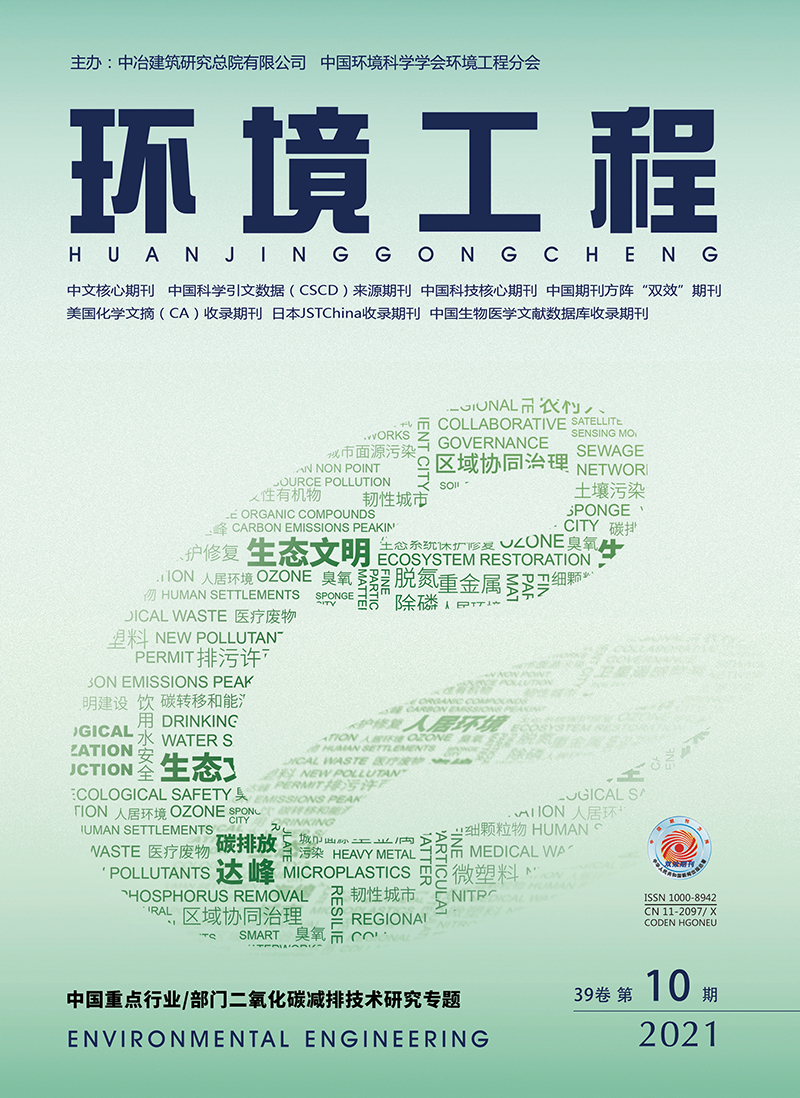| [1] |
牛明香, 王俊, 徐宾铎. 基于PSR的黄河河口区生态系统健康评价[J]. 生态学报, 2017, 37(3):943-952.
|
| [2] |
陆健健. 河口生态学[M]. 北京:海洋出版社, 2003.
|
| [3] |
刘瑜, 杨慧, 刘川, 等. 基于PSR模型的独流碱河河口生态系统健康评价[J]. 环境工程, 2014(3):121-125.
|
| [4] |
李长安, 殷鸿福, 俞立中, 等. 关于长江流域生态系统演变与调控研究的思考[J]. 长江流域资源与环境, 2001, 10(6):550-557.
|
| [5] |
姜翠玲, 严以新. 水利工程对长江口生态环境的影响[J]. 长江流域资源与环境, 2003, 12(6):547-551.
|
| [6] |
李纯厚, 林琳, 徐姗楠, 等. 海湾生态系统健康评价方法构建及在大亚湾的应用[J]. 生态学报, 2013, 33(6):1798-1810.
|
| [7] |
茅志昌, 潘定安, 沈焕庭. 长江河口悬沙的运动方式与沉积形态特征分析[J]. 地理研究, 2001, 20(2):170-177.
|
| [8] |
刘瑞玉, 罗秉征, 崔玉珩, 等. 三峡工程对河口生物及渔业资源的影响[C]//长江三峡工程对生态与环境影响及其对策研究论文集, 1987, 403-446.
|
| [9] |
张曙光, 王俊. 长江三峡工程水文泥沙年报(2016年)[M]. 北京:中国三峡出版社, 2017.
|
| [10] |
蒋衡,刘蓬,刘琳,等.基于PSR模型的磁湖流域生态系统健康评价[J].湖北大学学报(自然科学版),2021,43(6):661-666.
|
| [11] |
WALZ R. Development of environmental indicator systems:experiences from germany[J]. Environmental Management, 2000, 25(6):613-623.
|
| [12] |
杨志, 赵冬至, 林元烧. 基于PSR模型的河口生态安全评价指标体系研究[J]. 海洋环境科学, 2011, 30(1):139-142.
|
| [13] |
许树柏. 使用决策方法. 层次分析法原理[M]. 天津:天津大学出版社, 1988.
|
| [14] |
方子云. 南水北调(东线)对长江口盐水入侵的影响及对策——可持续发展与南水北调[C]//南水北调(东线)对长江口生态环境影响及其对策论文集, 2002, 59-64.
|
| [15] |
许新宜. 南水北调等工程对长江口生态环境的影响[C]//南水北调(东线)对长江口生态环境影响及其对策论文集, 2002, 59-64.
|
| [16] |
CHEN X Q, ZHANG, et al. Large and episodic decrease of water discharge from the Yangtze River to the sea during the dry season[J]. Hydrological Sciences Journal, 2002, 47(1):41-48.
|
| [17] |
水利部长江水利委员会. 长江泥沙公报[M].长江出版社,2013.
|
| [18] |
应铭, 李九发, 万新宁, 等. 长江大通站输沙量时间序列分析研究[J]. 长江流域资源与环境, 2005, 14(1):83-87.
|
| [19] |
HUMBORG C, ITTEKKOT V, COCIASU A, et al. Effect of Danube river dam on black sea biogeochemistry and ecosystem structure[J]. Nature, 1997, 386:385-388.
|
| [20] |
YANG S L, ZHANG J, ZHU J, et al. Impact of dams on Yangtze River sediment supply to the sea and delta intertidal wetland response[J]. Journal of Geophysical Research Earth surface, 2005, 110.
|
| [21] |
付桂. 长江口径流来沙量减少对河口含沙量的影响[J]. 水运工程, 2018(5):138-144.
|
| [22] |
段水旺, 章申, 陈喜保, 等. 长江下游氮、磷含量变化及其输入量的估计[J]. 环境科学, 2000, 21(1):53-57.
|
| [23] |
BAODONG W. Cultural eutrophication in the Changjiang (Yangtze River) plume:history and perspective[J]. Estuarine Coalstal & Shelf Science, 2006, 69(3/4):471-477.
|
| [24] |
国峰, 李志恩, 时俊, 等. 长江入海口徐六泾断面2005-2012年水环境因子及入海通量变化特征[J]. 长江流域资源与环境, 2015, 24(2):227-232.
|
| [25] |
沈志良. 长江磷和硅的输送通量[J]. 地理学报, 2006, 61(7):741-751.
|
| [26] |
ZHAO Y F, ZOU X Q, LIU Q, et al. Assessing natural and anthropogenic influences on water discharge and sediment load in the Yangtze River, China[J]. Science of the Total Environment, 2017, 607/608:920-932.
|
| [27] |
YANG H F, YANG S L, XU K H, et al. Human impacts on sediment in the Yangtze River:a review and new perspectives[J]. Global and Planetary Change, 2018, 162(MAR.):8-17.
|
| [28] |
中华人民共和国生态环境部. 2017中国近岸海域生态环境质量公报[R]. 2017.
|
| [29] |
刘新成, 沈焕庭, 黄清辉. 长江入河口区生源要素的浓度变化及通量估算[J]. 海洋与湖沼, 2002, 33(3):332-340.
|
| [30] |
王子成, 王保栋, 辛明, 等. 三峡水库正常蓄水后长江口海域营养盐分布于结构变化[J]. 海洋科学进展, 2015, 33(1):100-106.
|
| [31] |
FROELICH P N. Kinetic control of dissolved phosphate in natural rivers and estuaries:a primer on the phosphate buffer mechanism[J]. Limnology and Oceanography, 1988, 3(4):649-658.
|
| [32] |
周淑青, 沈志良, 李峥, 等. 长江口最大浑浊带及邻近水域营养盐的分布特征[J]. 海洋科学, 2007, 31(6):34-42.
|
| [33] |
张经. 中国河口地球化学研究的若干进展[J]. 海洋与湖沼, 1994, 25(4):438-445.
|
| [34] |
FRIEDL G, ALFRED WVEST. Disrupting biogeochemical cycles-Consequences of damming[J]. Aquatic Sciences, 2002, 64(1):55-65.
|
| [35] |
李茂田, 程和琴. 近50年来长江入海溶解硅通量变化及其影响[J]. 中国环境科学, 2001, 21(3):193-197.
|
| [36] |
章飞燕. 长江口及临近海域浮游植物群落变化的历史对比及其环境因子研究[D]. 上海:华东师范大学,2009.
|
| [37] |
徐兆礼, 白雪梅, 袁琪, 等. 长江口浮游植物生态研究[J]. 中国水产科学, 1999, 6(5):52-54.
|
| [38] |
王云龙, 袁琪, 沈新强. 长江口及临近水域春季浮游植物的生态特征[J]. 中国水产科学, 2005, 12(3):300-306.
|
| [39] |
贾海波, 邵君波, 胡颢琰, 等. 三峡水库蓄水前后长江口及其临近海域浮游植物群落结构的变化及原因分析[J]. 海洋通报, 2014, 33(3):305-309.
|
| [40] |
李俊龙, 郑丙辉, 刘录三, 等. 长江口浮游植物群落特征及其与环境的响应关系[J]. 环境科学研究, 2013, 26(4):403-409.
|
| [41] |
郭沛涌, 沈焕庭, 刘阿成, 等. 长江河口浮游动物的种类组成、群落结构及多样性[J]. 生态学报, 2002, 23(5):892-900.
|
| [42] |
袁兴中, 陆健健. 围垦对长江口南岸底栖动物群落结构及多样性的影响[J]. 生态学报, 2001,21(10):1642-1647.
|
| [43] |
刘录三, 郑丙辉, 李宝泉, 等. 长江口大型底栖动物群落的演变过程及原因探讨[J]. 海洋学报, 2012, 34(3):134-145.
|
| [44] |
周名江, 颜天, 邹景忠. 长江口邻近海域赤潮发生区基本特征初探[J]. 应用生态学报, 2003, 14(7):1031-1038.
|
| [45] |
周晓蔚, 王丽萍, 郑丙辉. 长江口及毗邻海域生态系统健康评价研究[J]. 水利学报, 2011, 42(10):1201-1208.
|
| [46] |
叶属峰, 刘星, 丁德文. 长江河口海域生态系统健康评价指标体系及其初步评价[J]. 海洋学报(中文版), 2007, 29(4):128-136.
|
| [47] |
陈耀辉, 刘守海, 何彦龙,等. 近30年长江口海域生态系统健康状况及变化趋势研究[J]. 海洋学报, 2020, 42(4):55-65.
|
| [48] |
新华社. 中华人民共和国国民经济和社会发展第十四个五年规划和2035年远景目标纲要. http://www.xinhuanet.com/2021-03/13
/c_1127205564.htm.
|


 Login
Login Register
Register E-alert
E-alert






 DownLoad:
DownLoad: